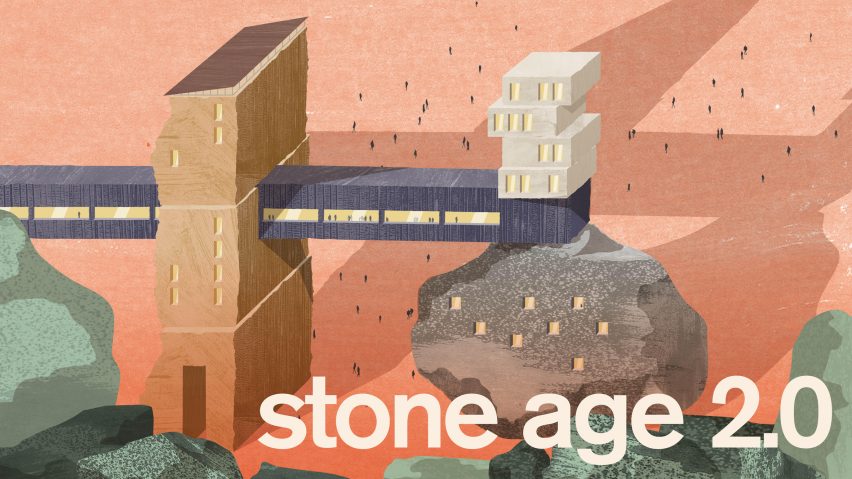Can stone be a viable modern building material? Dezeen's Stone Age 2.0 series explores the material's re-emergence and potential to be a durable, low-carbon alternative to steel and concrete.
Starting today, our week-long Stone Age 2.0 series will investigate how a small, but growing, group of architects and engineers are rediscovering the potential of one of the world's oldest building materials.
Widely available, durable and long-lasting, stone was once the go-to material for millennia, with recorded ancient buildings dating back almost 10,000 years built from it.
Along with domestic structures, some of the world's largest and most impressive buildings were created from stone. From the Pyramids in Egypt, the Parthenon in Greece and the high gothic cathedrals of Europe, notable stone architecture is all around the world.
However, the material's dominance as a structural material ended with the rise of concrete and steel, with stone reduced to a decorative role, often hiding or enclosing another structural material.
Now architects and engineers are aiming to reignite the stone age promoting the material as a viable structural alternative to steel and concrete.
While driven in part by the reasons that led to stone initially being so prevalent – it being strong, plentiful and fireproof – the material's reinvestigation is also driven by sustainability concerns.
The world is slowly facing up to the reality and scale of the climate emergency, and architects and engineers are acknowledging the built environment's role in it. The built environment reportedly accounts for 39 per cent of global emissions.
This is leading to serious thinking, and rethinking, about material choices and reinvestigating the merits of natural materials such as timber and cork, which are already in widespread use.
Much like the resurgence of timber as a structural material, although as yet far less developed, stone is seen by its proponents as a potential way construction can reduce its huge environmental impact.
Specifically, the proponents of stone say it can significantly reduce the embodied carbon of our buildings, principally because it can be used in its raw, unprocessed form. Embodied carbon refers to the emissions associated with bringing buildings into being as opposed to operational emissions generated during their lifetimes.
Some research suggests that stone could reduce embodied carbon emissions by as much as 60-90 per cent when compared to standard concrete and steel construction.
Of course, questions over the impact of stone extraction and transportation still need to be answered, while more practical concerns over inflexibility and how to incorporate the material within modern construction systems are addressed.
In our week-long Stone Age 2.0 series, we will talk to experts to investigate whether stone can emerge as a viable alternative, or complimentary material, to steel, concrete and timber.
Stone 2.0 is the latest Dezeen series looking at how materials and technology are impacting the world we live in. It follows a trio of Revolution series – Timber Revolution last year, Solar Revolution in 2022 and Carbon Revolution in 2021.
Stone Age 2.0
This article is part of Dezeen's Stone Age 2.0 series, which explores the potential of stone to be a viable, low-carbon, modern structural material.

